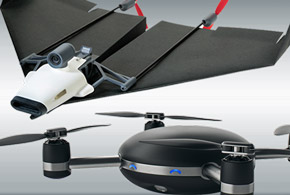One of the amusing and sometimes annoying things about technology is dealing with the inevitable hype cycle associated with any new device. Drones fly near the top of the list. Over the past few years, they’re been highlighted in news stories, featured in promotional videos and billed as a solution to just about every problem.
Naturally, we’ve also witnessed the inevitable backlash. Politicians, public safety officials and others have railed against drones. There also have been clear public safety dangers, such as drones interfering with commercial aircraft and firefighters in helicopters.
A few extremists have also taken aim at drones literally: They’ve introduced bounties and shot them out of the sky.
Yet, drones have already revolutionized the way directors film movies, TV show and commercials. Insurance companies and engineering firms are now using them to inspect buildings, high-tension wires, bridges and other infrastructure. And agribusiness and food producers are using them to monitor land, crops and animals.
According to the Federal Aviation Administration (FAA), 5,537 petitions to use drones were granted as of July 19, 2016. Recently, the FAA finalized Part 107 for small Unmanned Aircraft Systems.
These first operational rules, which took effect in August, create national, uniform regulations for commercial drone operations. This represents a huge step forward because it allows drones to deliver products beyond visual line of sight.
The FAA, citing industry sources, reports that the rule could generate more than $82 billion for the U.S. economy and create more than 100,000 new jobs over the next 10 years. Although, like any emerging technology, there will be frivolous and sometimes bizarre uses of the technology (7-Eleven recently delivered a Slurpee via a drone), other applications are amazing and remarkable.
For example, California-based drone operator Zipline announced it will begin delivering medical supplies to small and remote communities—including Native American reservations—in Maryland, Nevada and Washington State. Meanwhile, The Weather Company (an IBM Business) and AirMap will tap real-time hyper-local weather data to provide information to drone operators. This is important because Part 107 requires pilots of unmanned systems to consult a weather forecast prior to a flight.
At this point, it’s apparent that drones are here to stay and will impact a wide swath of industries. The resulting disruption will be enormous—and this is just the beginning.









